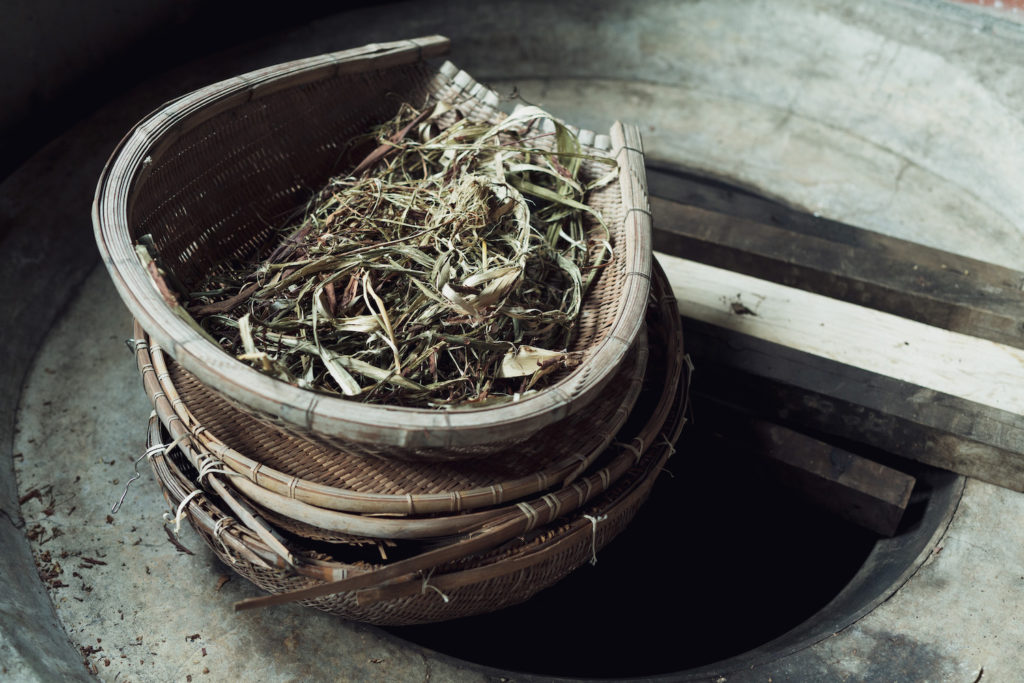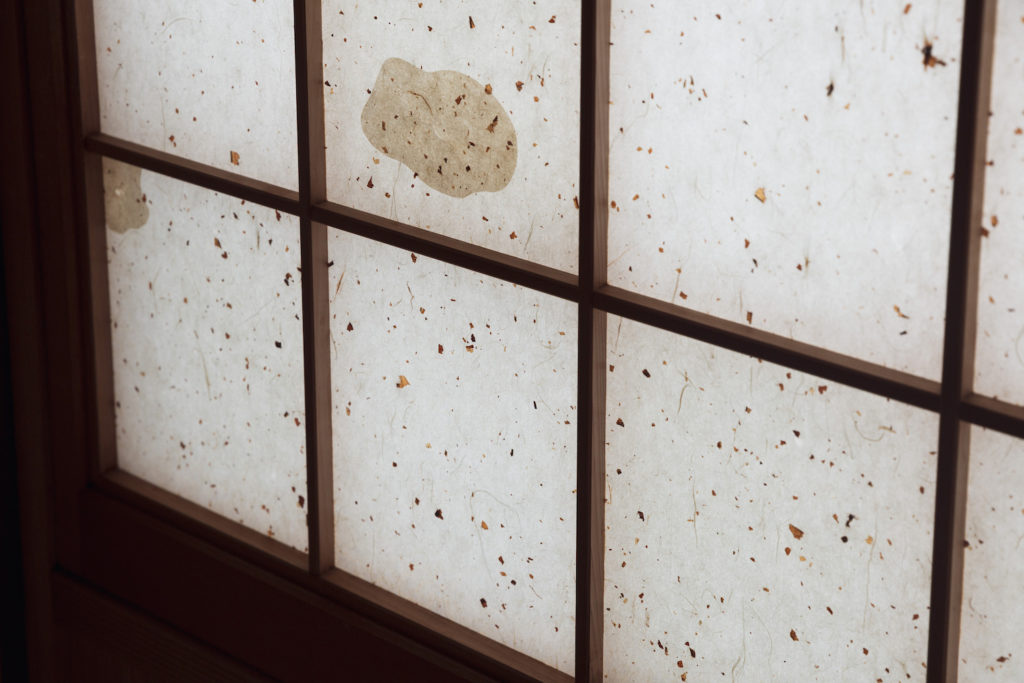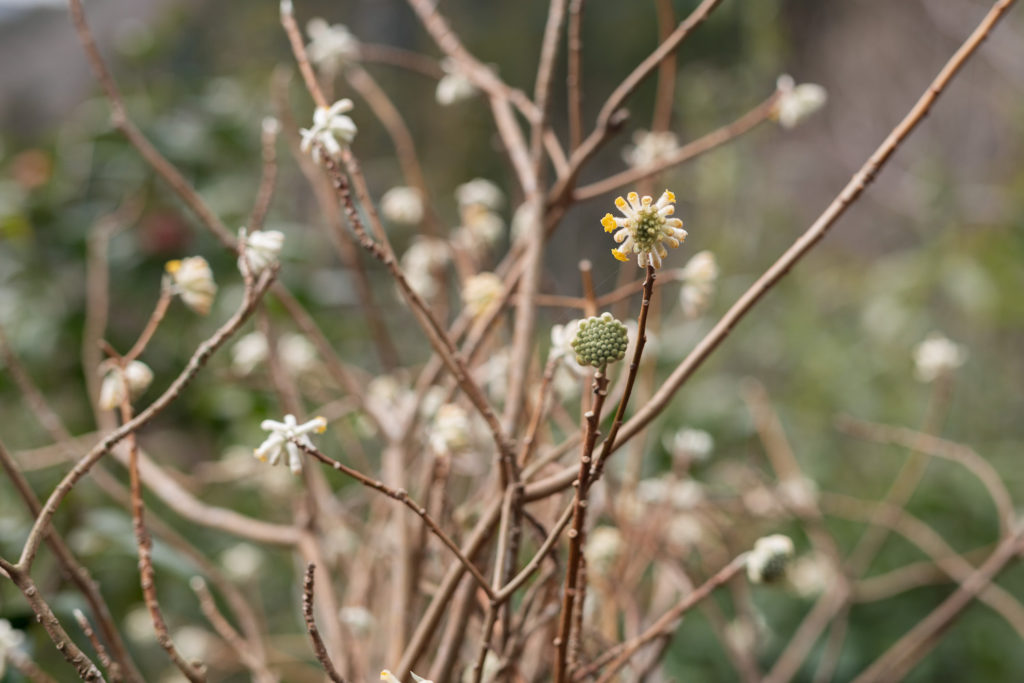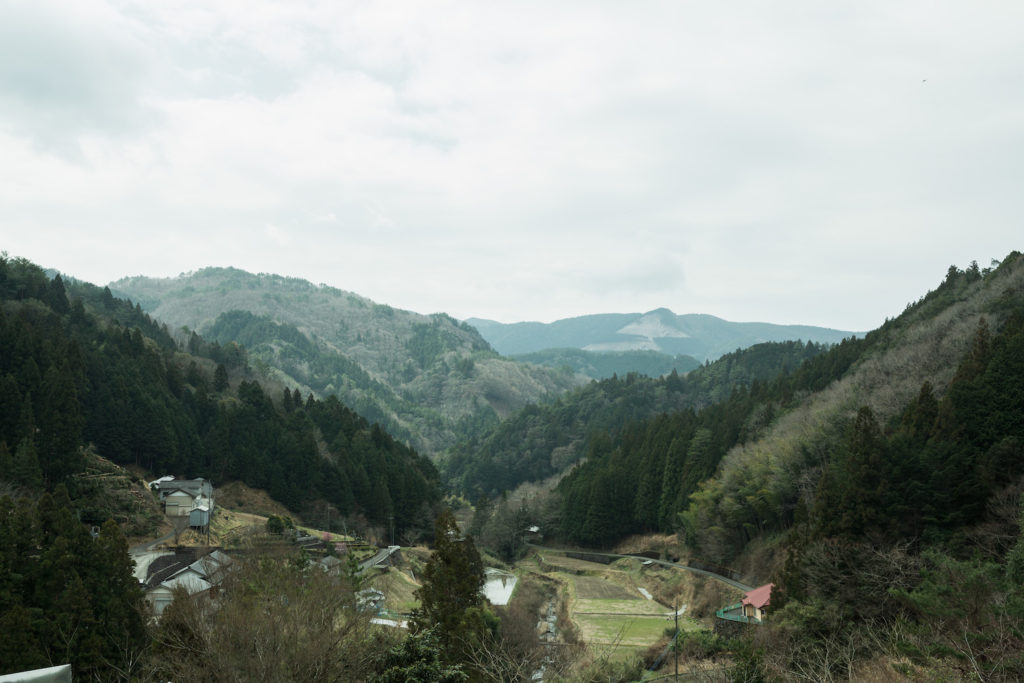The Shikoku Karst, reaching an elevation of 1,455 meters, is one of the three greatest karst areas in Japan. Its grandeur encompasses Yusuhara, a small town with a refreshing highland breeze in Kochi Prefecture. Halfway up this Shikoku Karst, at an elevation of about 650 meters, is a plateau with a stunning view. This is where Dutch washi artist Rogier Uitenboogaart runs his studio, Kamikoya.
Rogier’s work is used primarily in special interior furnishings like lampshades, sliding doors, wallpaper, and art panels. From color and pattern to texture and tactile quality, everything about his washi is amazingly delicate and expressive. The beauty of the paper is a reflection of the bounties of the land. Faithfully following the traditional methods of Tosa Washi, Rogier grows his own pesticide- and fertilizer-free materials and continues to make the paper by hand using spring water from the source of the Shimanto River. The finished product, needless to say, is 100% organic washi.

“Washi can be made wearing gloves and eyeglasses, but that washi will not speak to the heart. Yes, I’m concerned about drainage and protecting the environment, but the only way to relay the inherent message of washi is to start with the basics and approach each element, one by one. After all, I want to make beautiful washi that speaks to the heart.”

A washi artist of some 40 years, Rogier first discovered the traditional Japanese handmade paper as an apprentice bookbinder in his homeland, the Netherlands. “Washi took on a mystical appearance when held up to the light, like the church’s stained glass windows.” The perfectly fascinating beauty of the washi encouraged Rogier to travel solo to Japan. He visited studios throughout the country and ultimately settled in Kochi. Chosing his words carefully, Rogier told me why.
“Kochi is the starting point and the essence of washi making. It has a largest production of raw material and the best tools in Japan. All technical innovations from the Meiji period onward took place right here. Also, the atmosphere of Kochi is different from the rest of Shikoku Island. The people here still uphold the traditional way of life. That is Kochi’s greatest strength.”
An idyllic satoyama landscape unfolds outside the windows. The kozo (paper mulberry), mitsumata (oriental paperbush), and kuwa (common mulberry) plants growing in the fields on the slopes are extending their branches freely under the comfort of the gentle sun. I saw what Rogier meant. Time seems to have stood still here for an eternity. The peaceful scenery is reminiscent of lovely old Japan.


“Very few growers are left. From a sense of crisis, I started leasing and expanding into neglected fields and paddies about five years ago. On the bright side, more young people now are keen on returning to the basics and growing their own materials while keeping the water clean and steering clear of pesticides. I also think more people are appreciating the values of washi. I really feel it coming—this is the beginning of a new era.”













